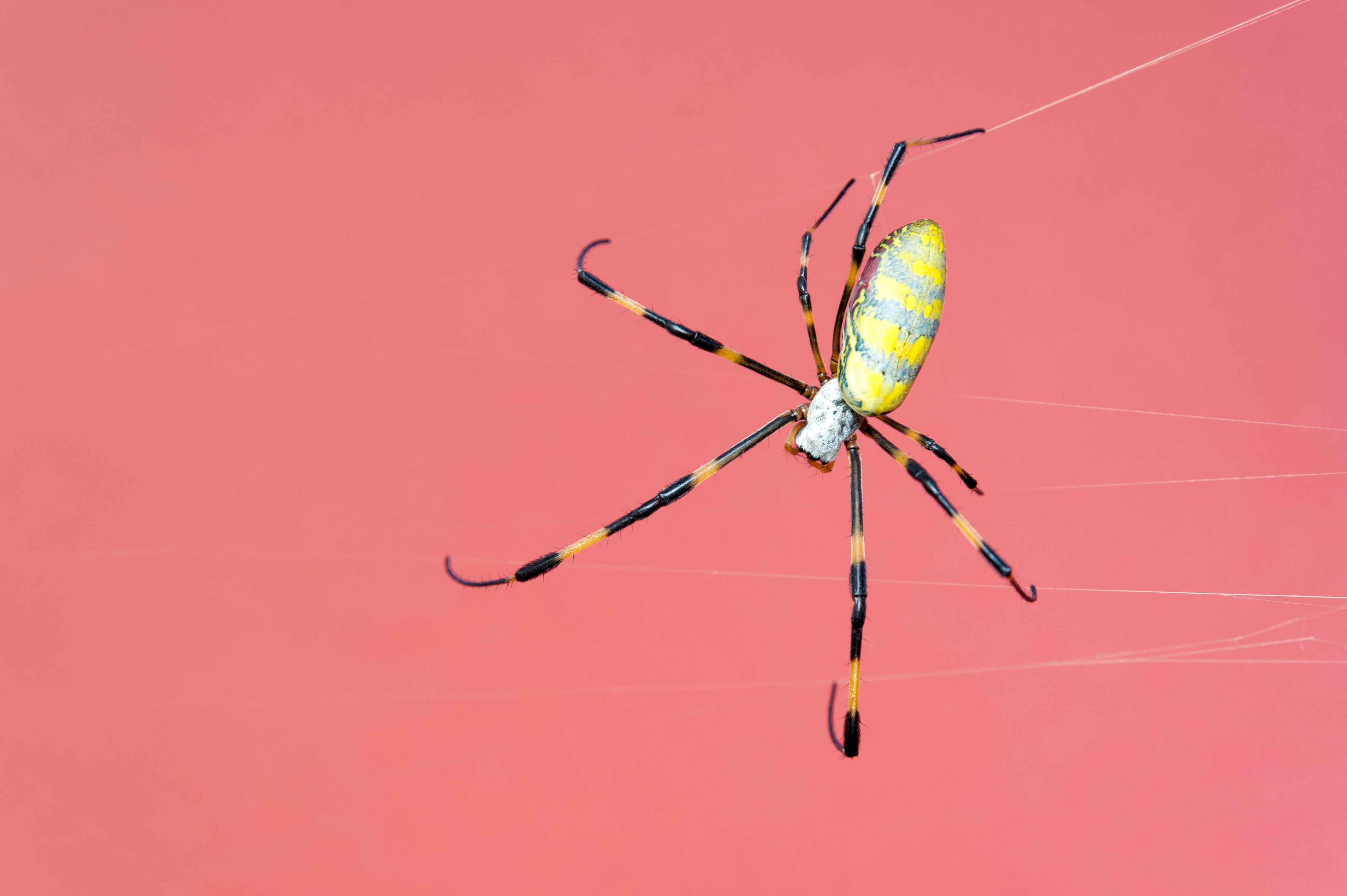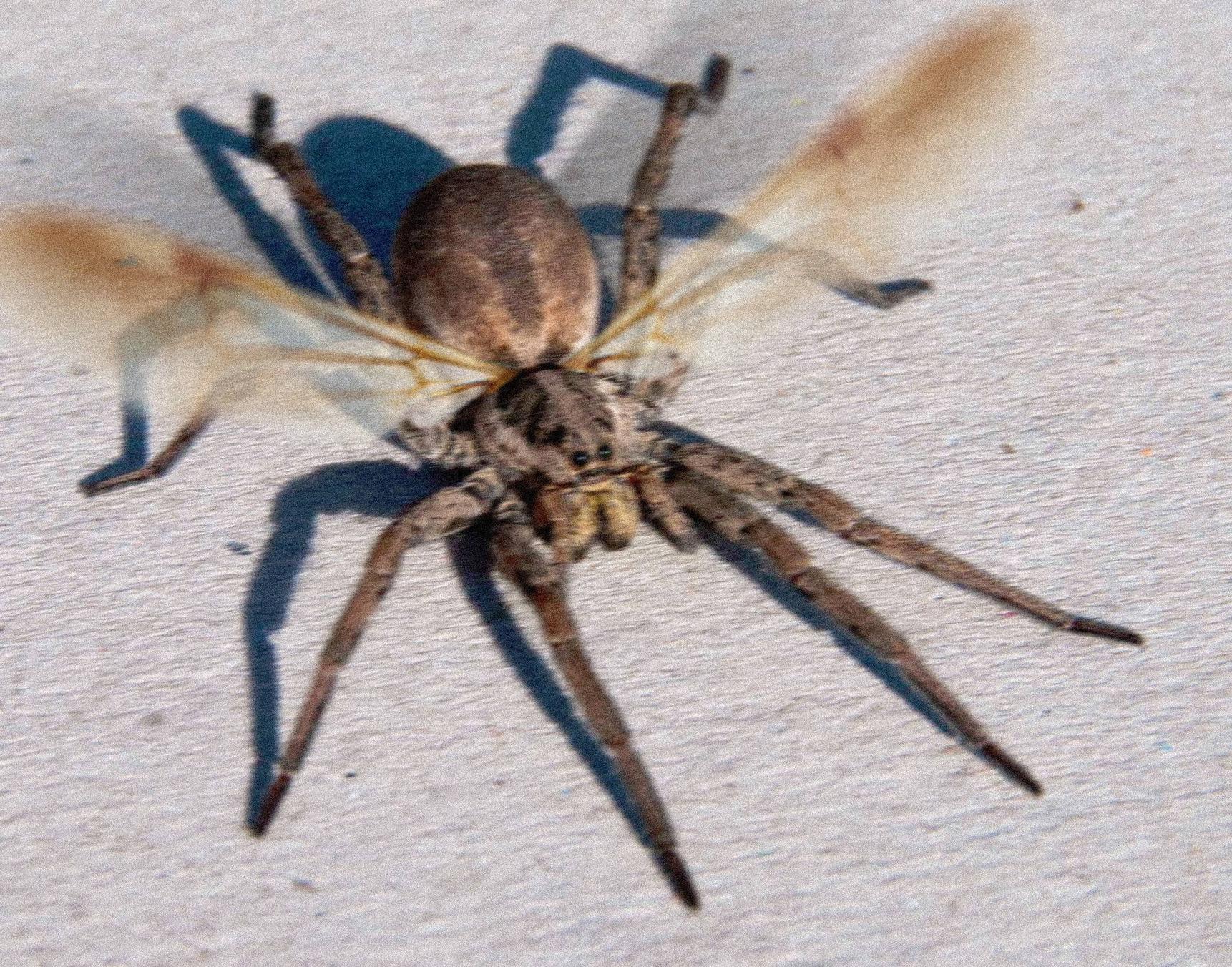Characteristics of Flying Spiders

Flying spiders – The world of spiders is filled with an astounding diversity of species, and among them are a select few that possess the remarkable ability to fly or glide through the air. These aerial arachnids have evolved unique adaptations that allow them to navigate the skies, defying the traditional perception of spiders as terrestrial creatures.
The sight of flying spiders, their delicate bodies suspended in the air, always evokes a sense of wonder and unease. But what if these airborne arachnids could also be used as a metaphor for the fickle nature of fame? Like rotten tomatoes hurled at a movie premiere, flying spiders represent the ephemeral nature of public adoration.
One moment, they are soaring high, the objects of fascination, and the next, they are brought crashing down by the whims of a fickle audience.
Adaptations for Flight
Flying spiders achieve their aerial feats through a combination of adaptations, primarily utilizing silk and specialized wing-like structures. Some species, such as the Australian feather-legged spider (Ancylometes bogan), produce copious amounts of silk, which they use to create a silken balloon that carries them aloft. Other spiders, like the gliding spider (Selenops radiatus), have evolved flattened bodies and enlarged leg surfaces, allowing them to catch air currents and glide for considerable distances.
Flying spiders, a peculiar sight to behold, their webs a delicate dance in the breeze. They evoke a sense of wonder, a reminder of nature’s boundless creativity. Yet, within this realm of the arachnid, there lies a tale of intrigue and deception.
Master Torbin , a shadowy figure, is said to possess a forbidden knowledge, a way to control these aerial wonders. His motives remain shrouded in mystery, but one thing is clear: the secrets of flying spiders are a dangerous game to play.
Examples of Flying Spiders
- Australian feather-legged spider (Ancylometes bogan): Known for its silken ballooning behavior, where it releases a silken parachute to float on air currents.
- Gliding spider (Selenops radiatus): Possesses a flattened body and enlarged leg surfaces, enabling it to glide effectively.
- Parachute spider (Hyptiotes cavatus): Releases a silken thread that acts as a parachute, allowing it to descend gently from trees or other high surfaces.
- Ballooning spiders (family Theridiidae): Utilize silk threads to create silken balloons that carry them long distances, aiding in dispersal.
Mechanisms of Flight
The mechanisms behind spider flight vary depending on the species. Silken ballooning, as employed by the Australian feather-legged spider, involves releasing a large amount of silk that traps air, forming a buoyant balloon that carries the spider upward. Gliding spiders, on the other hand, rely on their flattened bodies and enlarged leg surfaces to increase their surface area, enabling them to catch air currents and glide over short distances.
Ecological Significance of Flying Spiders

Flying spiders, possessing an extraordinary ability to disperse through the air, play a crucial role in various ecosystems, influencing population dynamics, genetic diversity, and food web interactions.
Their exceptional mobility enables them to traverse vast distances, colonizing new habitats and contributing to the distribution and connectivity of spider populations. This dispersal capability facilitates gene flow between isolated populations, promoting genetic diversity and reducing the risk of inbreeding.
Impact on Food Webs
As predators, flying spiders exert a significant influence on insect populations, regulating their abundance and diversity. Their aerial hunting strategies allow them to access prey that other ground-dwelling spiders cannot reach, expanding their ecological niche and reducing competition with other predators.
Conversely, flying spiders also serve as prey for a wide range of animals, including birds, bats, and larger insects. Their aerial presence makes them vulnerable to predation, contributing to the intricate balance of food webs and energy flow within ecosystems.
Human Interactions with Flying Spiders

Flying spiders, with their unique ability to navigate the skies, have captivated human imagination and shaped cultural beliefs across societies. Their presence has inspired both awe and fear, leading to a diverse range of interpretations and interactions throughout history.
Cultural Significance and Symbolism, Flying spiders
In many cultures, flying spiders are revered as symbols of wisdom, creativity, and the interconnectedness of life. The Hopi people of North America associate flying spiders with the “Spider Grandmother,” a benevolent deity who weaves the web of existence. In ancient Egypt, the goddess Neith was often depicted with a flying spider on her head, representing her role as the creator and protector of the universe.
Historical Encounters
Historical accounts of encounters between humans and flying spiders are scarce but intriguing. In the 16th century, Spanish explorer Hernán Cortés reported seeing “spiders as big as sparrows” flying over the Mexican countryside. More recently, in 1954, a swarm of flying spiders descended upon the town of Parkes, Australia, causing widespread panic and speculation.
Benefits and Risks
Flying spiders can have both beneficial and detrimental effects on human activities. On the one hand, they play a role in pest control by preying on insects that can damage crops or spread diseases. On the other hand, some species of flying spiders are known to transmit diseases to humans, such as the black widow spider and the brown recluse spider.
Flying spiders, with their delicate webs and aerial acrobatics, are a marvel of nature. Their ability to glide through the air has captivated the imagination of many, including Dean-Charles Chapman , a renowned naturalist and explorer. Chapman’s extensive research on these enigmatic creatures has shed light on their fascinating life cycle and behavior, further unraveling the mysteries of the natural world.
The delicate trapeze artists of the insect world, flying spiders are a testament to the ingenuity of nature. They dance through the air, their silken threads tethered to the earth below. In the acolyte time , the tapestry of life is woven with intricate threads, connecting the past to the present and the future.
Like the flying spiders, our own lives are suspended in the web of time, delicate and ephemeral, yet eternally connected.
Flying spiders, nature’s aerial acrobats, weave intricate webs across the vast expanse of our skies. As the sun sets, casting a golden glow upon the horizon, their ethereal forms dance gracefully in the fading light. Their presence is a testament to the boundless wonders of the natural world, echoing the indomitable spirit of exploration that fuels our quest for the stars.
Much like the starliner launch , a beacon of human ingenuity soaring through the cosmic void, these tiny creatures remind us of the interconnectedness of all living things, from the celestial realms to the terrestrial wonders that surround us.